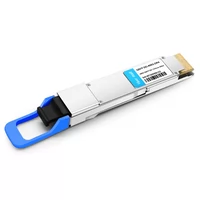The pounding of the fast and furious data communications in contemporary society is creating a lot of demand for improved and even speedier link speeds, prompting new levels of optical transceiver technology. On the other hand, the QDD 400G DR4 Optical Transceiver Modules is a critical improvement in this area as it possesses better performance, efficiency, and compatibility with the most popular networking devices, including Cisco and Juniper. This article examines in detail the features, functioning principles, and use-related issues of these transceiver modules, introducing the specialists to the knowledge of their functions and possible use in the present-day active network structure. Further detailed examination of QDD 400G DR4 coverage solution effective in meeting such vertical requirements which are fast emerging. Readers of this invitation to join me will thus appreciate how such Essentials of Communications & Media modules will assist in satisfying the contemporary bandwidth-hungry data centers and telecommunication infrastructures.
What is the QDD 400G DR4?
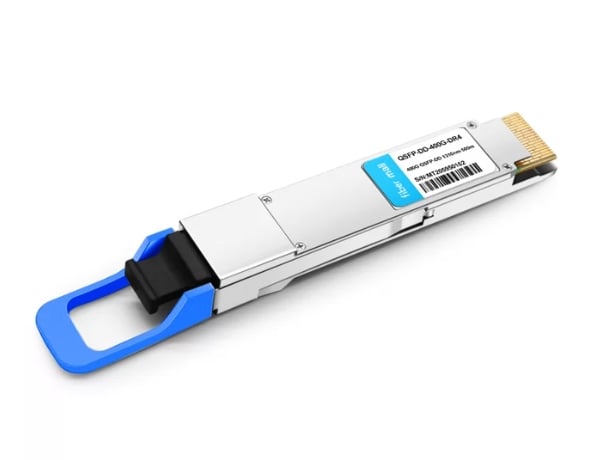
Overview of the QDD 400G DR4 Technology
The QDD 400G DR4 optical transceiver modules boast an advanced design that enables the grounded transmission of data rates of 400 Gbps over a distance of 500 meters of multimode fiber. The design operates at the 850nm wavelength. It uses a quad level of pulse amplitude modulation (PAM4), significantly enhancing the amount of data passed through the signaling compared to the original methods. The QDD 400G DR4 has been made with supporting existing platform interconnects in mind, eliminating cases of compatibility problems. Moreover, these modules’ small and less wattage-consuming features suit them for high-density positions as they fulfill the growing urge for faster data rate requirements while at the same time not being power-hungry. Generally speaking, the structure helps effectively provide the higher bandwidth requirements associated with modern data centers and telecare networks.
Key Features of the QDD 400G DR4 Transceiver
The QDD 400G DR4 transceiver has several outstanding characteristics that help it operate and serve its purpose within networking systems units.
- High Data Rate: The maximum data transmission rate can reach 400Gbps, which is good even in very demanding scenarios.
- Extended Reach: It works comfortably on multimode fiber and can span up to 500 Meters, allowing for diverse deployment.
- Wavelength Utilization: The wavelength of exploitation is 850 nm, which is the most effective concerning the quality of transmitted signals.
- Advanced Modulation Scheme: Increase capacity in data delivery by employing quad-level pulse amplitude modulation ()PAM4) about the 200G DR2 modules; these are more effective than quad-level-based modules.
- Seamless Integration: This improves installation performance by supporting fast deployment with existing networking equipment, minimizing further interference in operations.
- Compact and Energy Efficient: Constructed in a relation capacity such that little energy is used at high-density installations.
- Robust Protocol Support: Able to work with several types of networking, enhancing its application in different network structures.
The above QDD 400G DR4 transceiver features make it a central solution for addressing the growing bandwidth requirements presented by heavy data environments.
Applications and Use Cases in Data Centers
The following features are provided for the newest QDD 400G DR4 transceiver, which is widely used in various data center segments where high data throughput and effective transmission of information are necessary. The long reach and high data rate provided makes it suitable for:
- Cloud Computing: Assisting in quickly transferring data across remote cloud architectures so that virtualization and software-as-a-service (SaaS) workloads can be handled.
- Big Data Analytics: Improving the transmission of huge amounts of data from one server to another enables speedy evaluation of the information for decision-making.
- High-performance computing (HPC): Performing high-end operations that are time- and latency-sensitive, mainly in scientific computations and financial analysis.
- Storage area networks (SAN): Enabling quick data access from and storage update to the connected devices by effectively including the storage appliances, thus enhancing access to data and storage volume.
- Interconnect in hyperscale networks: Helping manage the operations of extensive data center facilities by providing enough bandwidth required to interconnect thousands of servers and devices at a go using appropriate 400G DR4 interconnects.
These use cases demonstrate the applicability of the transceiver as data center requirements advance.
How Does the QDD 400G DR4 Work?
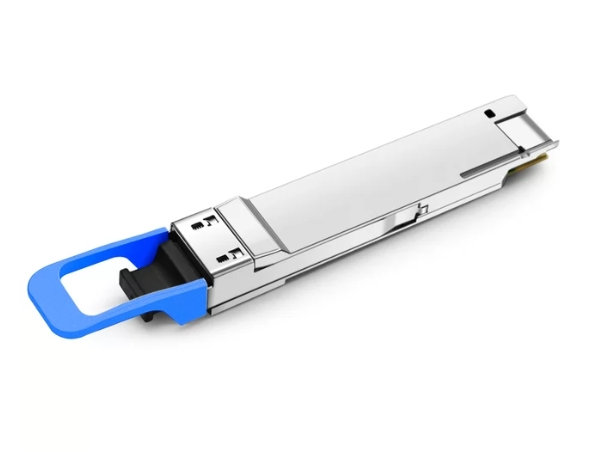
Technical Specifications of the QDD 400G DR4
The technical specifications of the QDD 400G DR4 transceiver are the following:
- Data Rate: 400G, Very high bandwidth, which is effective for applications involving data.
- Wavelength: It operates at about 850 nm and is best used with short-distance multimode fiber.
- Reach: OM4 multimode fiber supports distances up to 400 meters, allowing it to be used effectively within data centers.
- Connector Type: The MTP/MPO connector type creates zero or very little free space between fibers in data centers.
- Operating Temperature: The device can operate within a temperature range of 0 to 70 degrees Celsius.
- Power Consumption: Uses an average power of about 3.5W, improving power efficiency in data center operations.
- Protocol Compliance: Meets the standards for IEEE 802.3cm protocols to allow interconnection of networking devices.
- Form Factor: QSFP-DD (Quad Small Form-factor Pluggable Double Density) allows for space savings and design uniformity within the switch fabric.
These reasons are reflected in the specification of the QDD 400G DR4 transceiver, which will effectively cater to the data transmission requirements of modern data center architecture and thereby improve network efficiency.
Understanding PAM4 and 1310nm Wavelength
PAM4, which stands for Pulse Amplitude Modulation with four levels, is a technique used to apply progressive modulation for sending more than one bit of information per symbol. This is done using four amplitude levels, which offer an increase in data rate even in the absence of bandwidth extension. This one, PAM4, is very useful for high-capacity zoom lenses such as the 400G DR4 transceivers since it improves the throughput of the signals transmitted over the multimode fibers.
The 1310nm wavelength is one of the working wavelengths in optical fiber communications that is very critical, especially in long-distance applications. It is mainly used in single-mode fiber systems where, with higher octets, the frequency can be increased with low order and dispersion. Regarding MODULATED signaling, this 1310nm light can also be efficient over a distance of around 10 kilometers, which is helpful in interconnecting data centers for better network functions and capacities. Using both PAM4 and 1310nm wavelength technologies addresses the current trends of modern transmission technologies in data infrastructure systems.
Role of Single-Mode Fiber (SMF) in QDD 400G DR4
Single-mode fiber (SMF) supports the performance of QDD 400G DR4 transceivers precisely due to its bandwidth and higher performance over distances essential for transmitting high-speed data. It can transmit light on a single path, which helps reduce modal dispersion, which is very important for high data rate operations and signal preservation. The 400G DR4 standard utilizes the SMF advantages, allowing efficient transmission, usually achieved for transmission distances of up to ten kilometers. In addition, using SMF and advanced modulation as PAM4 allows deploying architecture in the cloud and data centers without operators being constrained by fiber use while satisfying the increasing data needs. Therefore, with its active participation in enhancing the 400G networks’ overall efficiency, SMF meets the changing demands of modern telecommunication network systems.
Compatibility of QDD 400G DR4 with Network Equipment
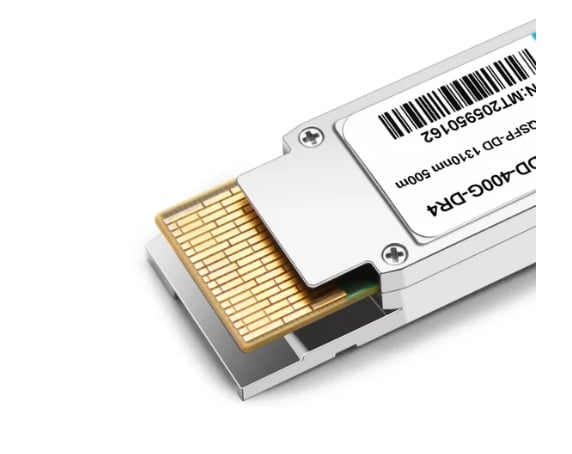
Cisco and Juniper Compatibility
The QDD 400G DR4 transceiver interface is designed to function in numerous network equipment manufactured by leading multinational corporations like Cisco and Juniper. The Latest Cisco switches, including the Nexus and Catalyst 9000 series, support the QDD 400G DR4 modules, which support bandwidth optimization; in this case, enterprise networking and data transmission speed is no longer a challenge. Also, Juniper’s QFX series can support 400g DR4 transceivers with low latency performance and high bandwidth, which are ideal applications in the cloud network core. Both companies help users migrate on their recommendations since their equipment is designed well to meet the limits of SMF and PAM4 technologies. Hence, Users will have opportunities to move to a more robust technology as their traffic grows and their networks evolve. This compatibility highlights why careful consideration and selection of the appropriate transceiver matters to the required interoperability and utilization of the networks to optimal levels.
Compatibility with Other Vendors
The QDD 400G DR4 transceiver has also shown good interoperability with the equipment of other leading manufacturers in the networking industry. For example, Arista Networks, specializing in cloud networking technology, allows integration of QDD 400G DR4 modules, a plus in deploying cloud data centers with ease and scalability. In addition, Mellanox Technologies Global Inc., integrated with NVIDIA, offers switches geared towards QDD 400G DR4, providing better results by raising the throughput and minimizing the latency regardless of the application used. Also, companies like Huawei and Lenovo are steadily transitioning to the QDD 400G DR4 standard, which gives them resources for addressing a more comprehensive range of networking problems. This trend of interoperability across vendors illustrates the versatility embodied in QDD 400G DR4 transceivers in supporting different operational needs in a homogeneous network environment.
Standards and Compliance: IEEE 802.3bs
The IEEE 802.3bs standard, developed in 2017, provides specifications regarding the applications of 200 GbE and 400 GbE. The standard has been widely accepted as it allows for further development of high-speed broadband connections. It provides for both optical fibers, single and multiple-mode fibers, thus improving long-distance data transfer while minimizing signal losses. It employs technologies like PAM4 (Pulse Amplitude Modulation) to achieve twice faster effective data transmission rates without increasing bandwidths and effectively exploiting already laid out facilities. The 802.3bs defines acceptable interoperability and performance levels for application-side devices, including various transceivers that achieve better integration into heterogeneous networks. Thus, more competitive data transmission systems become available for designers and users.
Installation and Maintenance of QDD 400G DR4 Modules
Installing the QSFP-DD 400G DR4 Transceiver
The installation process ensures the maximum performance and longevity of the QSFP-DD 400G DR4 transceiver, a sensitive operation requiring following protocols. To avoid electrical hazards, start by ensuring all equipment is powered off. For optimal handling, remove the package surrounding the transceiver, but make sure that the optical parts and connectors are not touched. The transceiver aids in transmitting and receiving signals to and from where the network device is located; it has to be correctly positioned on the network device, and the notch sits on its guide pin in the slot. The end of the transceiver is inserted into the slot, where a click is heard, showing it sits securely in the slot. In a situation where connectors are already installed, reconnect them to their respective ports, making sure they are correctly seated. Later on, switch on the equipment and check for light emission of the transceiver and its signals, confirming that integration into the network has been done. There is a likelihood that further performance improvement and reliability may be obtained if the monitored connections used are periodically maintained over time.
Maintaining and Troubleshooting Fiber Optic Connections
To avoid adverse bottom-line repercussions in the long run, it is crucial to do proper maintenance and troubleshooting of the fiber optic connections. Regular visual inspection of connectors and fibers has to be undertaken, and if signs of dirt, scratches, misalignment, etc., are observed, they must be acted upon instantly. Use lens cleaning tools and solutions to cleanse enclosures for the QSFP-DD transceiver to avoid loss of signals in the transceiver. Also, throughout the process, ensure that the RF connectors are all adjusted and lodged firmly so that connections are not disrupted.
When troubleshooting, first, you should check for the optical transceivers’ status and fix or replace any faulty ones. A power meter can be used to glance through various points/ connections and measure the amount of power loss incurred, which should not exceed the limit. Unexpected losses, however, do occur sometimes, and more often than not, they result from severing or excessively curving the fiber optic cable. Terminating and terminating lightly is done to fix the problem of connection, done by other qualified personnel, not to worsen the situation. For instance, performance metrics can be documented routinely, and the systems can be tested to prevent outages, thus improving the reliability of the fiber optic network.
Firmware and Software Updates
Updating the firmware and software of fiber optic network equipment components is always essential and secure. Updates are helpful for enhancing the system and resolving problems that malicious users may take advantage of. However, keeping track of the latest firmware updates offered by the manufacturers, who usually advertise them on their websites, and your purchase support is essential.
To bring out changes, the first thing to do is back up the current configuration so that it is possible to restore the configuration if anything goes wrong after the update. Implement the update using the general instructions provided by the manufacturer, which usually involves enhancing the device by incorporating the most recent version of the firmware and installing it with the help of the device monitoring panel. Always check the system for proper patient monitoring performance and successful connection of network systems after implementation of the updates. Further enhancing the description, maintaining and updating the record of each change, and explaining the reasons that caused those changes in the performance of the network may assist in troubleshooting and maintenance later on.
Performance and Reliability of QDD 400G DR4
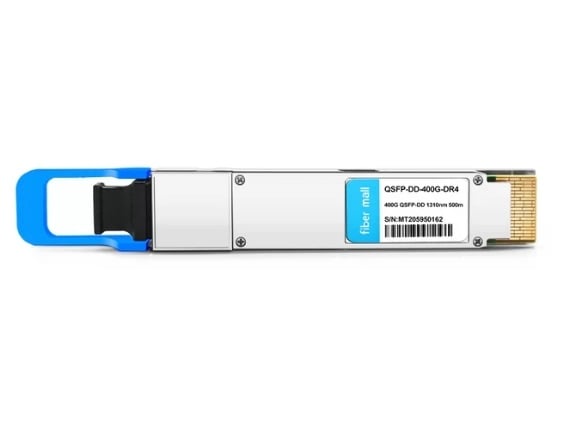
Expected Data Transfer Speeds and Latency
The 400G DR4 transceiver of the QDD is primarily utilized for enhanced performance in bit data communications, where up to 400 Gbps data throughput is achieved using multimode fiber within the range of 500 meters. This is achieved owing to the four-lane structure, which facilitates the transmission of 100 Gbps signals and is thus appropriate for use in data centers and high-speed networking.
While discussing latency, the QDD 400G DR4 is usually a low latency device, usually within the microseconds range, which is required in applications where data needs to be delivered as real-time information with little to no delays. The attributes of low latency and high data transfer rates also augment network performance and efficiency, as was the case in cases that require fast transfer and high volumes of data, such as cloud computing and big data analysis. It comes with an enlargement of the range of possible applications, including proper installation and setting of the mentioned transceivers to get the most from them and support the network.
Reliability in High-Demand Environments
The QDD 400G DR4 transceiver shows increased reliability features even when used in high-demand conditions. When used in data-driven scenarios where uninterrupted service is non-negotiable, this is a crucial unit aspect. These radio transmitters, capable of operating under clearly defined temperature and humidity ranges, also contain complex heat dissipation systems so that the equipment does not keep heating up, which affects its effectiveness. In addition, the quality materials and advanced technologies used in production make the devices resistant to hostile influences like dust and moisture, which prolong their service life.
What is more, the QDD 400G DR4 is designed to withstand stowage, operational shocks or vibration, and other factors present inside data centers and telecommunications installations. This is a desirable feature for the systems’ users in that it enhances data integrity and reduces packet loss through error correction algorithms, making the systems more reliable. Such cooling is necessary for the performance of these transceivers in more stringent environments than those intended at the time of installation. Therefore, regular follow-up and maintenance are required.
Long-Term Stability and Cost Efficiency
The QDD 400G DR4 module was developed to guarantee long-term operation and maintain a cost advantage over any active optical transceiver. These transceivers provide a reduction in the replacement cycle through superior manufacturing processes and materials and not only integrate into embedded systems. Moreover, such design features also help reduce the amount of power spent to run the systems, which, in conjunction, reduces operational costs over time.
This is because the transceivers are highly resilient, making maintenance demand low; hence, the reallocation of IT resources from maintenance to more critical functions is quite efficient. These factors and those arising from additional wireless reeds where data flow is regulated and more costs optimally managed help increase performance without increasing costs. The QDD 400G DR4 will, therefore, be a worthy equipment expenditure for companies seeking to grow sustainably in any data-driven environment.
Future Trends and Developments
Advancements in Optical Transceiver Module Technology
The latest changes and advances in optical transceiver module technology shall substantially boost data transmission rates and reliability. State-of-the-art components such as silicon photonics have reduced transceivers’ form and power consumption while increasing bandwidth. Further, the introduction of pluggable optics is changing the network architecture and allows companies to add functionalities seamlessly without major changes.
They are also the reasons behind the movement towards the use of transceivers with ever-increasing speeds, with 800G coming to the fore as a standard for interconnecting data centers and high-performing computing. Apart from this, the optimization of DSPs is diminishing the challenges that transceivers face regarding distance coverage. For that matter, the quality of transceivers in complex networks is improving. These changes add value to the existing structure and create groundwork for the next generation in optical networking.
Impact of Emerging Network Standards
New networking standards are particularly important in data communication and transmission. New standards under development, such as Ethernet 802.3bs and 802.3cd, are essential for providing higher data rates and thus popularizing the use of 400G and 800G solutions in several markets. Such standards promote interoperability amongst equipment made by different manufacturers and stability in performance characteristics, which is critical in multi-vendor environments.
Furthermore, the requirement to comply with higher standards for energy efficiency and reduced latency causes manufacturers to develop even more, resulting in greener and more efficient networking solutions. Moreover, using coherent optics with high-order modulation and methods introduced in developing standards helps keep up with the growing demands for network traffic while providing good quality services. There is, therefore, an improvement in network standards, which may create a framework for delivering fast, secure, and efficient means of transmitting data, thus benefiting the organizations by reducing operational costs and improving the performance of the networks.
Future-Proofing and Scalability
Future-proofing and scalability are attributes that should be primarily considered during any modern networking system’s design and implementation stages. This is because technology is rapidly changing, and data services are growing. Hence, all future-oriented measures, including growth-oriented measures such as investment in flexible architectures, must be implemented. In addition, solutions such as SDN and NFV can enable necessary and sufficient changes in network resources without too many upgrades, also enabling faster adoption of new technologies among networks.
In addition, such hardware designs allow the so-called ‘gradual approach’ in which some components with increased functionality can be replaced instead of the whole system; hence, many costs are saved in the gradual progression. The focus on scalable approaches is also proper for deploying cloud-based services, splitting otherwise static resource capabilities, and optimizing performance. Adopting these approaches, therefore, implies that businesses could deploy networks that will cater to new applications such as IoT and AI services since the world is becoming increasingly dynamic.
Reference Sources
Frequently Asked Questions (FAQs)
Q: What is the QDD 400G DR4 optical transceiver module?
A: QDD 400G DR4 is an optical transceiver module used for data transmission within a range of up to 500m over single-mode fiber (SMF) at higher data rates. It is compliant with QSFP-DD MSA and employs PAM4 signaling.
Q: Can the Cisco and Juniper networks use the QDD 400G DR4?
A: Yes, the QDD 400G DR4 is compatible with Cisco and Juniper Networks. Ready-made modules like the Cisco QDD-400G-DR4-S or Juniper Networks QDD-400G-DR4 are available to facilitate that.
Q: What is the maximum distance supported by the QDD-400G-DR4?
A: The bidirectional QDD-400G-DR4 device has a maximum transmission distance of 500 meters over single-mode fiber and works at a wavelength of 1310nm.
Q: What are the developed applications of the QDD-400G-DR4 compatible 400G QSFP-DD?
A: QDD-400G-DR4 compatible 400G QSFP-DD is extended mainly to data centers, HPC networks, and enterprise core networks with high data rates up to 400G Ethernet.
Q: Which features offer network flexibility in QDD 400G DR4 breakup?
A: The breakout functionality permits the QDD 400G DR4 module to convert a 400G host port to four 100G host ports, thus allowing for significant changes in network structure and degree of expansion.
Q: What kind and specification of fiber patch cable is required for the QDD-400G-DR4?
A: QDD-400G-DR4 is said to use single-mode fiber (SMF) patch cable to achieve the best results. The abbreviated requirement specification concisely covers the 1310nm wavelength and the 500 m distance aimed at achieving.
Q: Why is PAM4 modulation necessary in the QDD-400G-DR4-specific modules?
A: PAM4 modulation enhances data rates by incorporating more bits in a single symbol, unlike conventional NRZ modulation. This feature is necessary to facilitate 400G data rates in the QSFP-DD DR4 PAM4 optical transceiver module.
Q: Is it possible to use QDD-400G-DR4 in an environment with equipment from different vendors?
A: Yes, there are no restrictions on using QDD-400G-DR4 compatible modules with other vendor repeater equipment as long as they are within the limits of the QSFP-DD MSAs. Such a device configuration is advantageous for arranging joined, operated multidisciplinary networks.
Q: What is the operating wavelength range of the QDD-400G-DR4 compatible transceiver module?
A: The compatible transceiver QDD-400G-DR4 works efficiently within the 1310nm operating range, best for short-range interconnection of single-mode transmission up to 500 m.
Related Products:
Related posts:
- Next-Gen Data Transfer: SFP112/QSFP112/QSFP-DD800/OSFP 800G DAC
- Everything You Need to Know About CWDM Transceivers: From SFP Modules to 80km Optical Fiber Connectivity
- The Ultimate Guide to SGMII SFP Transceivers: Everything You Need to Know About Optical Transceivers and Ethernet Ports
- Unraveling the World of 400ZR: Enhancing DCI Networks with QSFP-DD and DWDM up to 120km.

